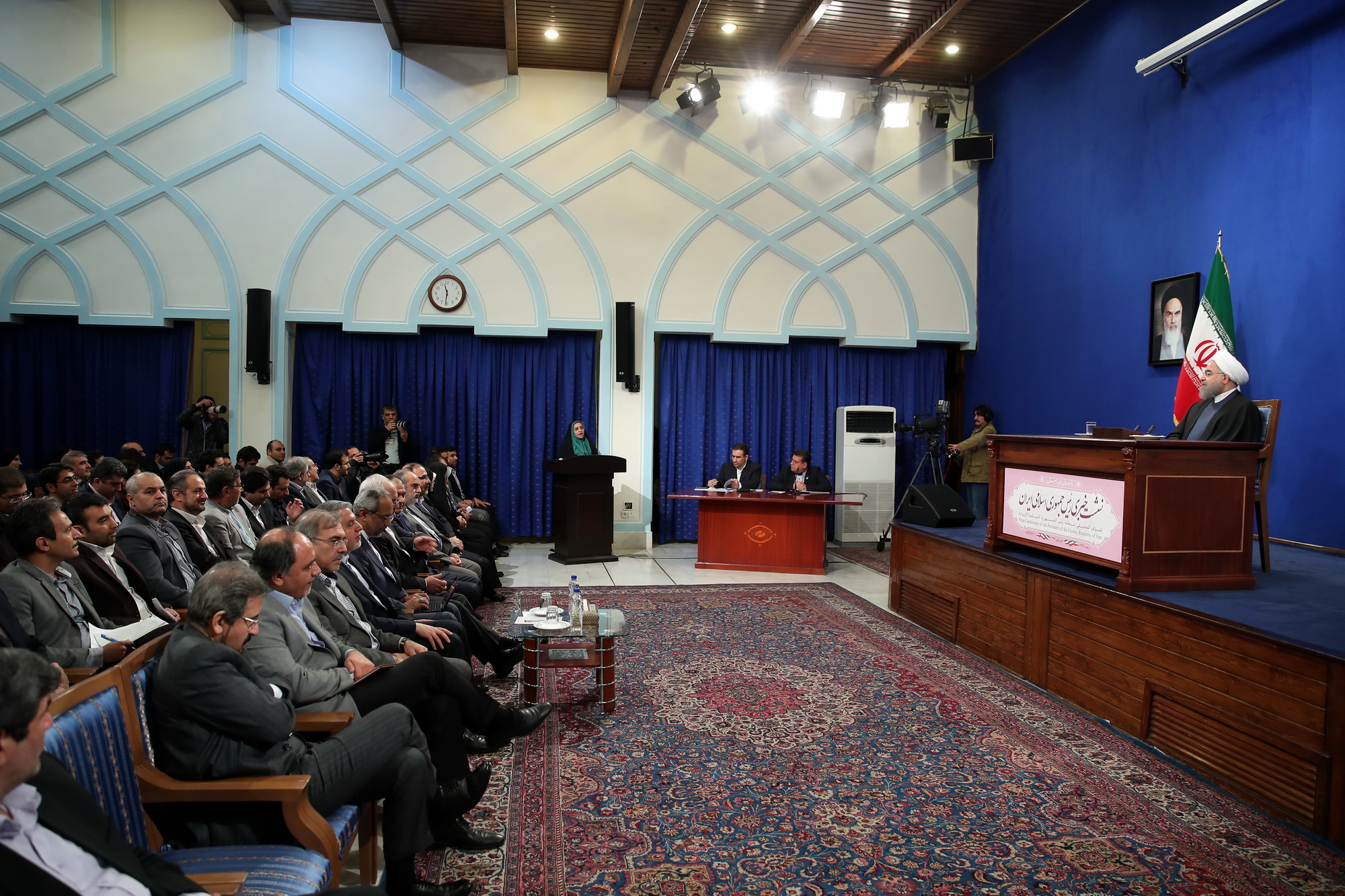President Hassan Rouhani on Monday denied reports claiming that the Iranian banking system is in crisis mode, stressing that the country’s financial system has improved under his four-year watch.
“I do not accept the use of the word ‘crisis’ [for the banking system] at all,” he said in response to a question at a press conference whether he accepts responsibility for the crisis in the banking system, reports Banker.ir.
The president noted that Iranian banks are now in much better shape than they were last year, quoting the chief executive of Bank Melli Iran, Mohammad Reza Hossein-Zadeh, as saying that measures undertaken to increase the capital of the state-owned lender have been unprecedented since the day the bank was established in 1928.
The Cabinet headed by President Rouhani voted in mid-January to obligate the Ministry of Economic Affairs and Finance to allocate 200 trillion rials ($5.3 billion) of excess funds to increase the core capital of state-run banks.
Pointing out that with the agreement of the banks themselves and not by way of official directives, his administration called for lowering interest rates, Rouhani said that for the banks to lower their rates, they first had to reduce deposit rates.
“This measure was pursued by imposing rates [on banks] in the previous government–measures that were not heeded by banks,” he said.
In June, the Money and Credit Council allowed the banking sector to offer approximately 15% interest on term deposits, lowering the rate by 3%. Banks were also asked to charge borrowers approximately 18%, though loans are reportedly offered at higher rates. Although the move was initiated by banks, the MCC was the final authority to approve it.
The Central Bank of Iran has announced that it seeks single digit interest rates in line with the inflation rate.
The president pointed to interbank rates that were reduced from 28% to 18% over the past four years, “which triggered the decrease of interest rates”.
He stressed that his administration did not borrow from the central bank at all and reimbursed a portion of its arrears to the banking system.
“The sky-high inflation rates of around 45% witnessed in the previous government came after it borrowed 430 trillion rials ($11.46 billion) from the central bank for the controversial Mehr housing project that is yet to be completed,” he said.
“Today, the situation of bank credit allocation has improved, although we must reduce the interest rates further. Lowering the interest rates, especially for production and working capital purposes, could be one of the major changes.”
According to Rouhani, Iranian banks have allocated more than 4.3 quadrillion rials ($114.6 billion) to economic sectors and 24,000 small- and medium-sized enterprises received capital during the previous fiscal year, “but some people have still treated bank CEOs unfairly”.
CBI Governor Valiollah Seif put the number of loans at over 4.77 quadrillion rials ($125.3 billion) for the first 11 months of the previous Iranian year (March 20, 2016-February 18, 2017) in his meeting with bank CEOs and board members this week.
President Rouhani admitted that Iranian banks require an overhaul, adding that his administration was the first to act in line with clearing its payment arrears to the banking system, while “simultaneously doubling the core capital of state-owned banks”.
Late January, the president communicated a measure approved by his ministers, which decreed that the Planning and Budget Organization of Iran “is permitted to allocate a maximum of 146.2 trillion rials ($3.78 billion) from the surplus assets of the Central Bank of Iran to clear the confirmed debt of the government to agent banks”.
According to government spokesman and head of PBO, Mohammad Baqer Nobakht, speaking at a major economic conference in mid-February, government debts to the banking sector stood at 380 trillion rials ($10.13 billion) four years ago, adding that it has now reached 420 trillion rials ($11.2 billion).


